Essential Arts: L.A.’s art fairs are here. From Frieze to Felix, it’s #artmageddon
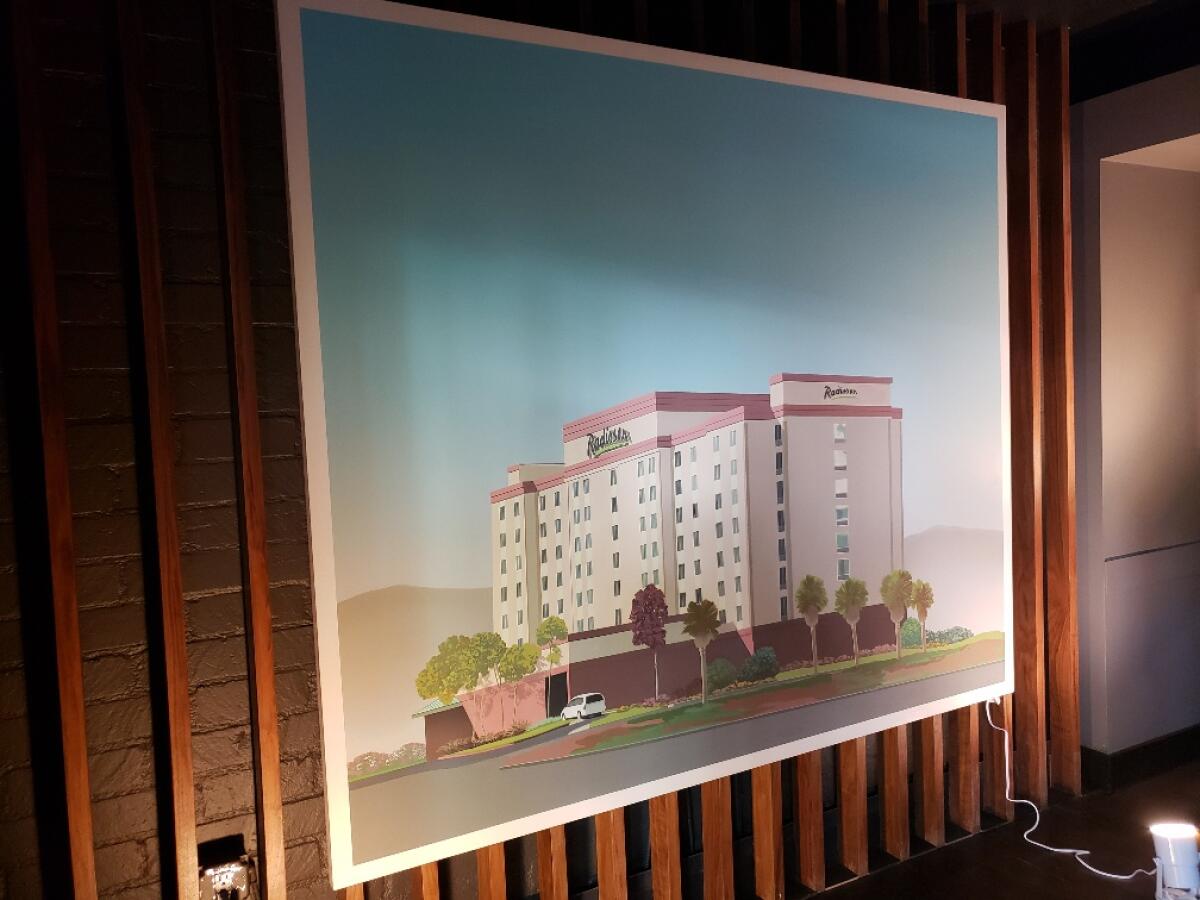
So many Champagne cocktails, so little time. I’m Carolina A. Miranda, staff writer at the Los Angeles Times, with the week’s essential art fair insanity — and Weimar-era art!
Essential image
This stylish photograph by August Sander of painter Otto Dix with his wife Martha caught my eye in a new show at Hauser & Wirth. (Love her ‘do.) The show is part of a series of programs devoted to culture in Germany during the Weimar era. Keep scrolling for deets!
Frozen solid
The Times’ Deborah Vankin has been hitting the #artmageddon parties hard. (I will not succumb to branding by calling it Frieze Week.) Her first stop? A fiesta at the Chateau Marmont on Tuesday, where amid Prosecco and grass-fed sliders, she did a vibe check with gallerists.
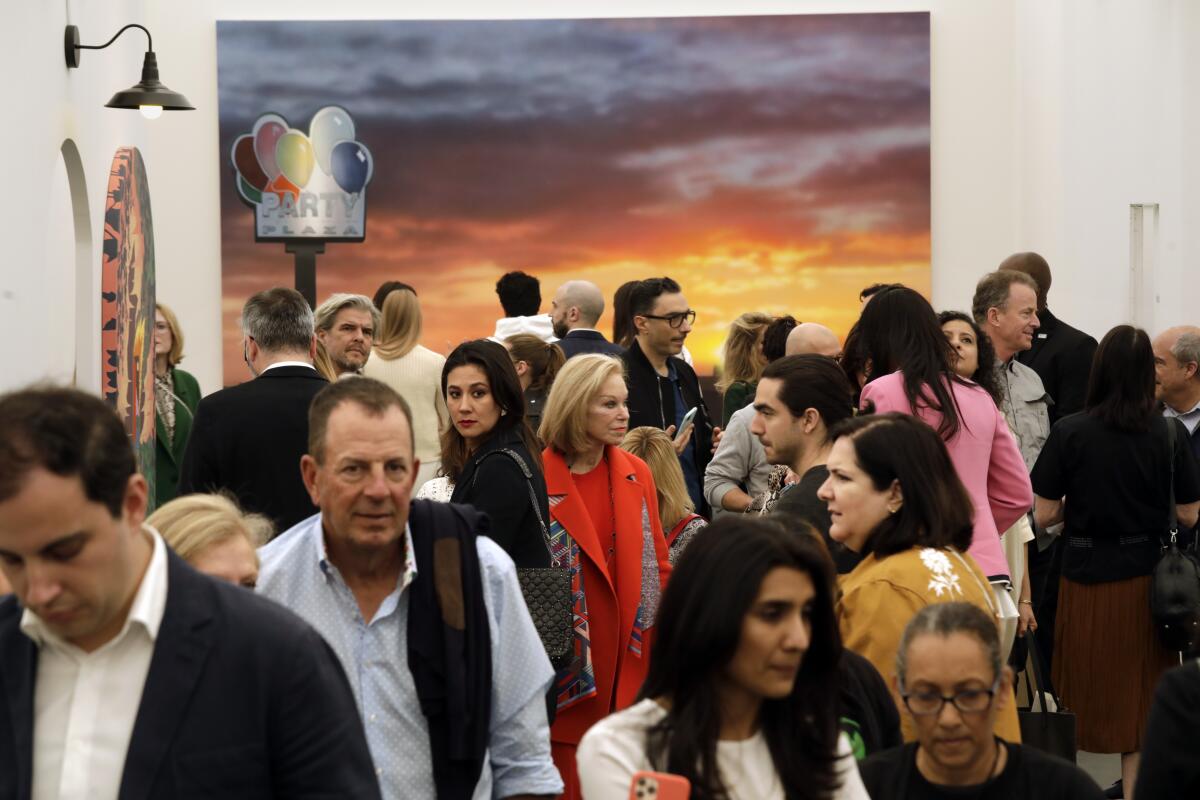
She also endured the hordes at Frieze’s big VIP preview, checking out the objets d’art along with Leo and J.Lo and Jill Soloway. By Thursday, tickets to the commercial portion of the fair were sold out. And that’s not nothing as prices can climb to $550/head with fancy-pants tours.
Vankin also reports that at a splashy Thursday event hosted by Kayne Griffin Corcoran and Pace Gallery, it was announced that mobile gaming mogul Mark Pincus had donated $3 million to James Turrell’s Roden Crater project. I was there and heard that Elon Musk was in the house, but missed it because I was having an intense flirtation with a tray of mini grilled cheeses.
Make the most of L.A.
Get our guide to events and happenings in the SoCal arts scene. In your inbox once a week.
You may occasionally receive promotional content from the Los Angeles Times.
“There is something about meeting strangers in anonymous hotel rooms.” While everyone goes Frieze-crazy, naughty art critic Christopher Knight has been soaking up the air of “tatty glamour” at the Felix art fair, which is being held in the many guest rooms of the Hollywood Roosevelt hotel. “The lighting is bad, many rooms are cramped, elevators are slow,” he writes. “But none of that really matters. Felix is sociable fun.”
Makeda Easter previews Gerard & Kelly’s Saturday performances at MOCA (timed to coincide with #artmageddon), which mixes pole dancing with representations of the flag. The duo has studied queer and feminist responses to pole dancing and worked with New York City subway dancer Forty Smooth to reconsider the form.
Easter also hung with artist Genevieve Gagnard as she patrolled the VIP event at Frieze while decked out in a dress emblazoned with the phrase, “Sell to Black Collectors.”
The Times’ deputy editor of arts and entertainment, Alison Brower, in the meantime, hung out at a special event at the Getty that raised serious issues in a week that is more about parties. This included a discussion about mass incarceration with artists and activists, and a performance by actor and playwright Liza Jessie Peterson.
Classical notes
Classical music critic Mark Swed spent Oscars day hitting a pair of shows featuring difficult-to-perform works, old and new. The first featured actor Julian Sands performing John Cage’s “Speech” at LAXART. The second was a show of Bach’s “The Art of the Fugue” at Soka Performing Arts Center featuring pianist Daniil Trifonov. Trifonov, he writes, turned the composition “into a genuine concert work in ways no one before seems to have.”
Julia Ward of the L.A. Phil, Stephanie Barron of LACMA and independent curator Nana Bahlmann have teamed up for a series that explores the music, sculpture and image of Weimer-era Germany. This includes concerts by the Philharmonic through Feb. 29, a display of costumes by Bauhaus artist Oskar Schlemmer, a performance featuring the sound poetry of Kurt Schwitters and the exhibition of August Sander’s photography at Hauser & Wirth.
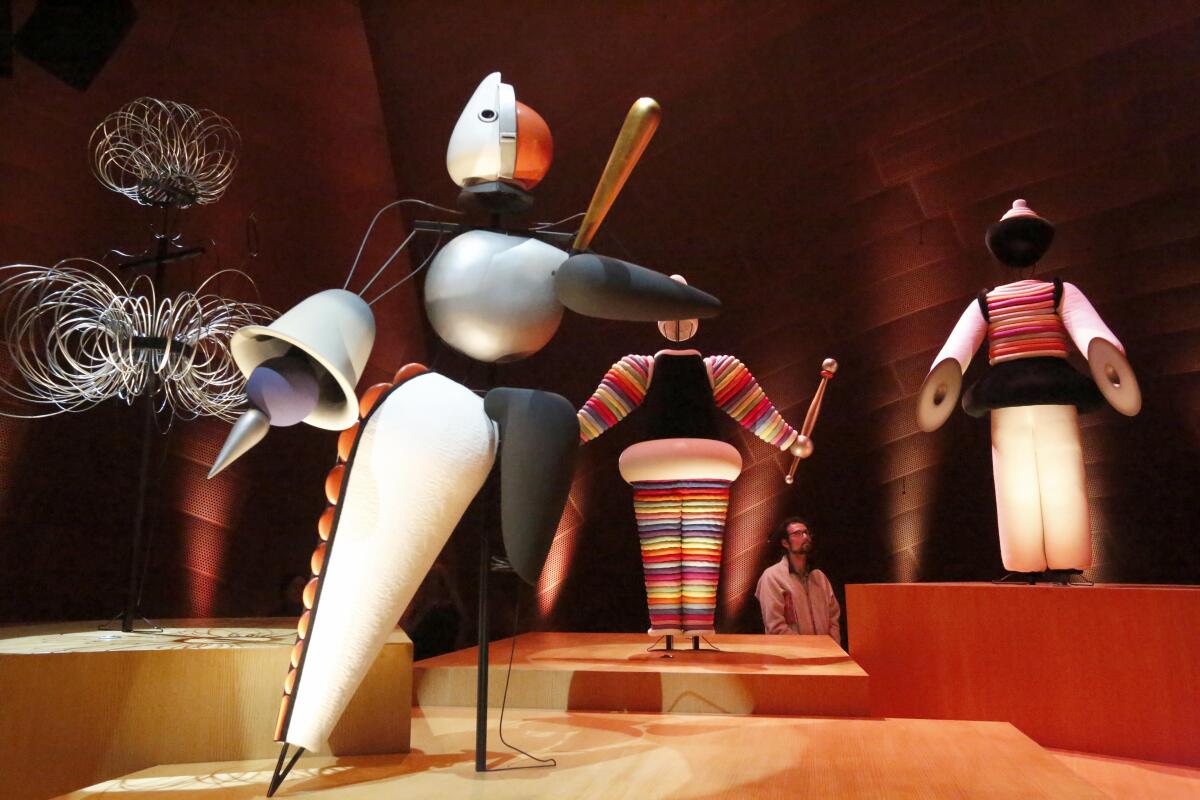
Swed was at one of the concerts, led by Esa Pekka-Salonen, which explored the Weimar era. “Just how timely is this?” he writes of the days that preceded Nazism. “As intermission came to a close Friday and the L.A. Phil musicians were taking their places onstage at Walt Disney Concert Hall, patrons unfurled a large banner in the section behind the orchestra that read: ‘Trump / Pence#outnow / Refusefascism.org.’”
The Times’ Jessica Gelt reports on the group behind the protest.
On the stage
Florian Zeller’s play “The Father,” about a man battling dementia, is at the Pasadena Playhouse through March 1. Theater critic Charles McNulty quibbles with the play’s “poetic architecture,” but reports that Alfred Molina is superb: “A mind is coming undone, but the acting behind the disintegration is always in control.”
“I’m always writing shows for the 16-year-old in me who liked movies and comics and thought theater was stuffy and uncool.” That’s what playwright Qui Nguyen, co-founder of Vampire Cowboys, tells The Times’ Ashley Lee of the New York-based theater company, which is currently staging “Revenge Song” at the Geffen Playhouse.
Lee also reports on the five staged readings that will take place at the Pacific Playwrights Festival at South Coast Rep (an important stepping stone event). This year’s lineup includes a fictional reimagining of F. Scott Fitzgerald’s marriage to Zelda by Christie Baugher and Tony Meneses’ “El Borracho,” which catches a man in the final months of his life.
In the galleries
In his review of MOCA’s “With Pleasure: Pattern and Decoration in American Art, 1972-1985,” art critic Christopher Knight noted the importance of a show that accounted for a movement that has long been under regarded. This week, I sat down with two of the L.A. artists in the show: Merion Estes and Constance Mallinson, who told me all about how feminism and SoCal helped shape their work. Warning: contains references to glitter and slam dancing.
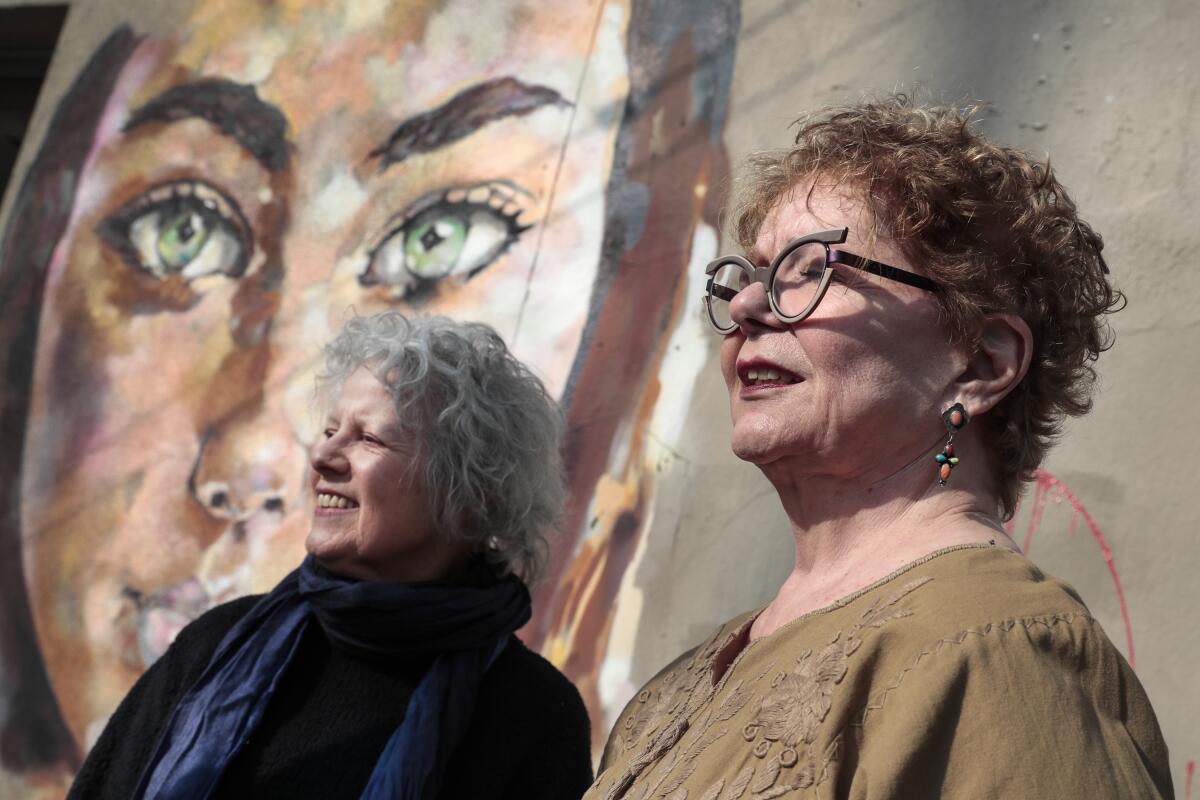
Knight reviews a show of “astringent” paintings and drawings by Katie Herzog at Klowden Mann that tweak the state of U.S. politics. “The show, which coincided with the impeachment of the U.S. president on charges related to the 2020 election,” he writes, “packs a grim but vital punch.”
Enjoying this newsletter? Consider subscribing to the Los Angeles Times
Your support helps us deliver the news that matters most. Become a subscriber.
Artist Miyoshi Barosh died last year at the age of 59, but her wry takes on materials and popular culture have been the subject of a trio of exhibitions around L.A.. Contributor Sharon Mizota has a look at the portion that is on view at Luis De Jesus Los Angeles Projects.
Plus: how Bay Area painter Salma Arastu is helping reimagine Islamic calligraphy.
AB5 follow-up
In late January, Makeda Easter reported on how California’s freelancer law, AB 5, was wreaking havoc among fine arts organizations for not defining the meaning of the term “fine artist.” Easter then sought additional feedback from people working in the arts — and it has arrived: “All it’s done,” writes one arts administrator, “is add a layer of panic and uncertainty.”
Design time
In last week’s newsletter, I wrote about a draft government plan to make Classical architectural styles “the preferred styles” for federal buildings — which has raised an outcry among critics. I wanted to add another batch of smart and thorough examinations of the topic by Justin Davidson, Philip Kennicott, Kate Wagner and Amanda Kolson-Hurley.
Likewise, Milton S.F. Curry, dean of USC’s School of Architecture, writes: “Elevating the quality of architecture should be our common goal, not singling out a particular style to represent the nation.”
Passages
Actor Orson Bean, a veteran TV actor and comedian who was also a mainstay of L.A.’s small theater scene, died at the age of 91 after being tragically hit by two cars.
Charles McNulty pays tribute to Bean’s skill as a stage actor — a “seasoned veteran who had perfected the art of holding an audience rapt” — and writes about their heartfelt correspondence.
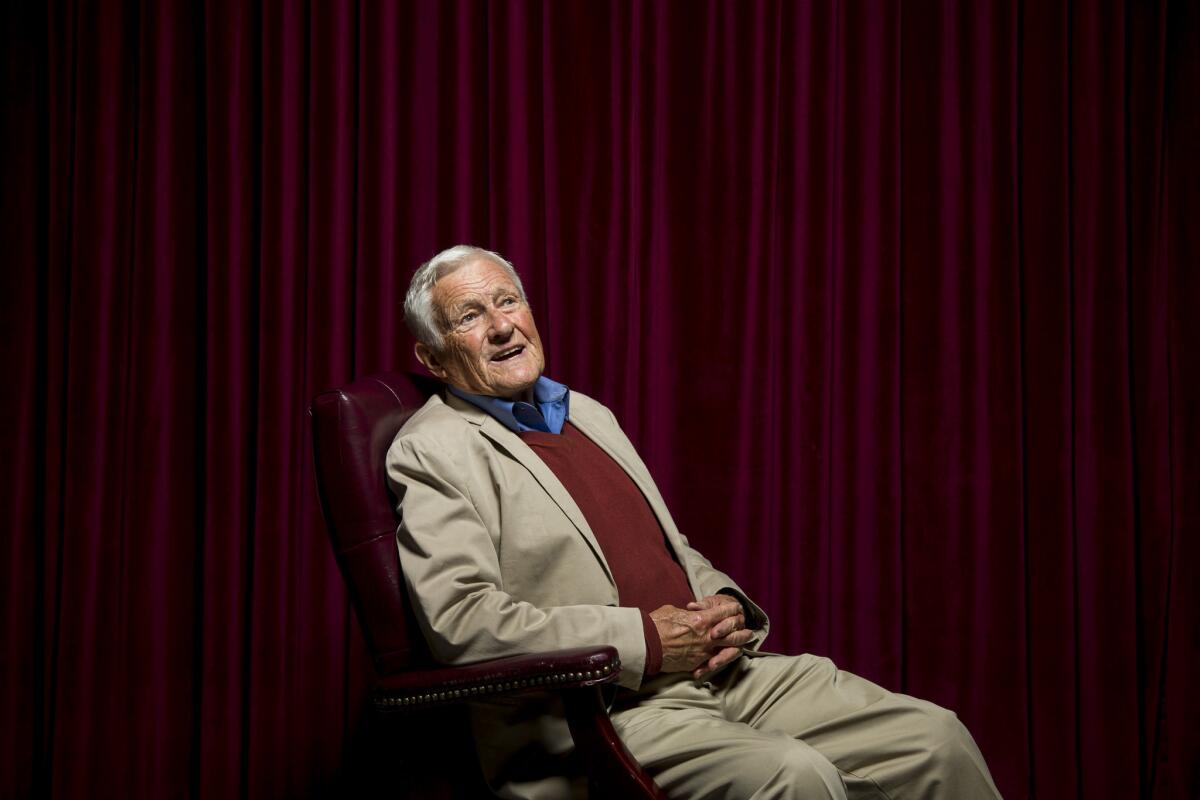
Ready for the weekend
I list non-#artmageddon happenings in my weekly Datebook, including the anticipated survey of work by Luchita Hurtado. Matt Cooper rounds up eight great things to do this week, including dance theater inspired by the poetry of T.S. Eliot. And you can find Cooper’s listings for this week and the week ahead in dance, theater, museums and more on our things to do: arts & culture page.
Bonus: The Los Angeles Times Book Club is hosting a conversation with former L.A. poet laureate Luis J. Rodriguez about his new book “From Our Land to Our Land” on Saturday. It will be moderated by my colleague Daniel Hernandez. Come!
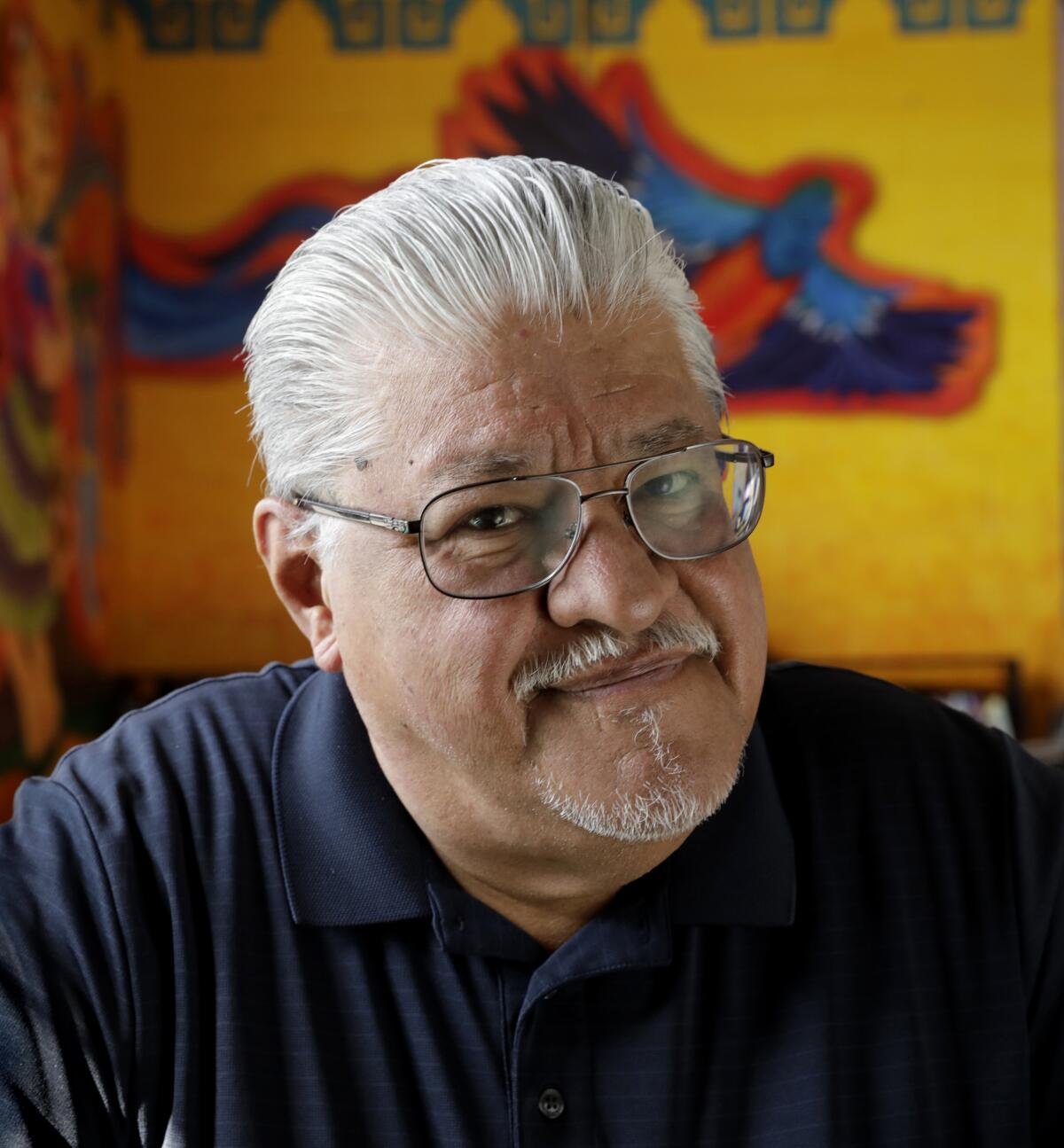
In other news
— Jori Finkel looks at the world of artist-run spaces in Los Angeles — and how they’ve managed to hold on even as mega-dealers consolidate.
— Hyperallergic has a fascinating piece about the Frank Stella work that went missing in Chile then re-emerged as a lunch table.
— Plus, the story behind the painting featured on the cover of Ta-Nehisi Coates’ novel “The Water Dancer.” It’s by L.A. painter Calida Rawles.
— DeLanna Studi has been named the new artistic director of Native Voices, the theater company devoted to supporting new works by Native artists at the Autry Museum.
— A section of Organ Pipe Cactus National Monument, which holds deep significance to multiple Native American communities, is being torn up to make way for the U.S.-Mexico border wall.
— The New Yorker has an insightful piece about the challenges of preserving the sites and structures key to African American history.
— My colleague Victoria Kim reports on the banjiha of South Korea, the semi-basement apartments that figured prominently in “Parasite.”
— Related: KCRW’s Design and Architecture had a great segment on the architecture in the film, featuring a terrific interview with architect Eui Sung-Yi of Morphosis, who once lived in a banjiha.
— After five years of prep, L.A. is ready to move forward on a revamped Pershing Square.
— The Academy Museum of Motion Pictures has an opening date: Dec. 14. Finally.
And last but not least ...

The biggest entertainment stories
Get our big stories about Hollywood, film, television, music, arts, culture and more right in your inbox as soon as they publish.
You may occasionally receive promotional content from the Los Angeles Times.




